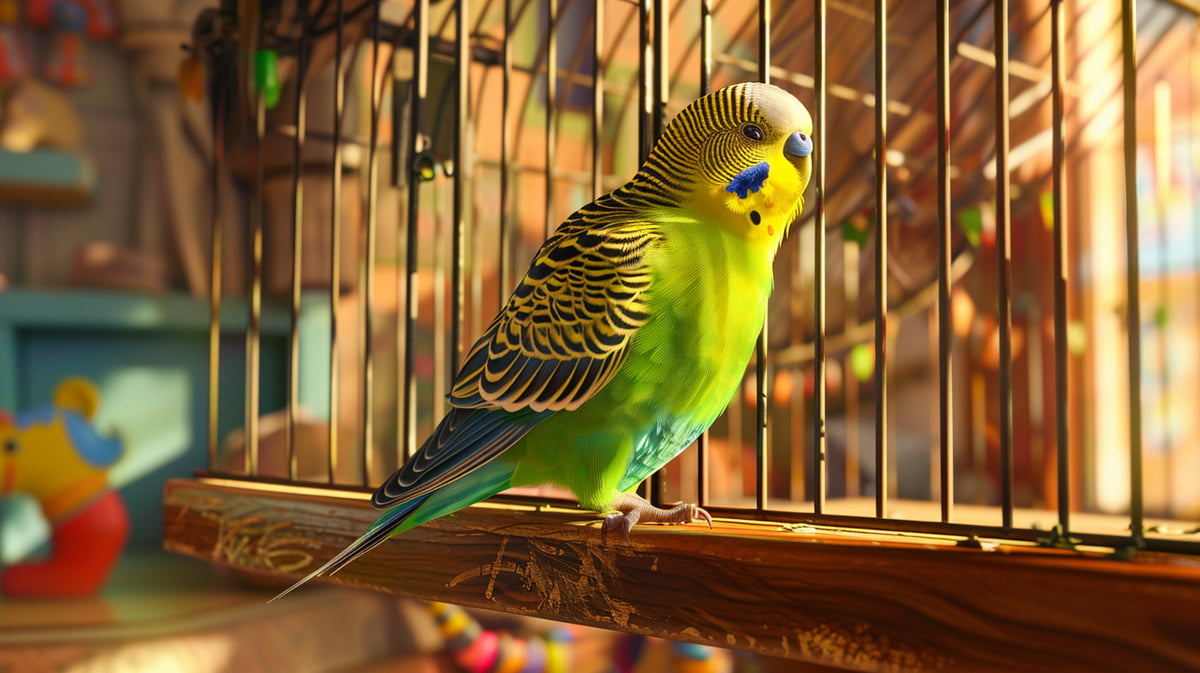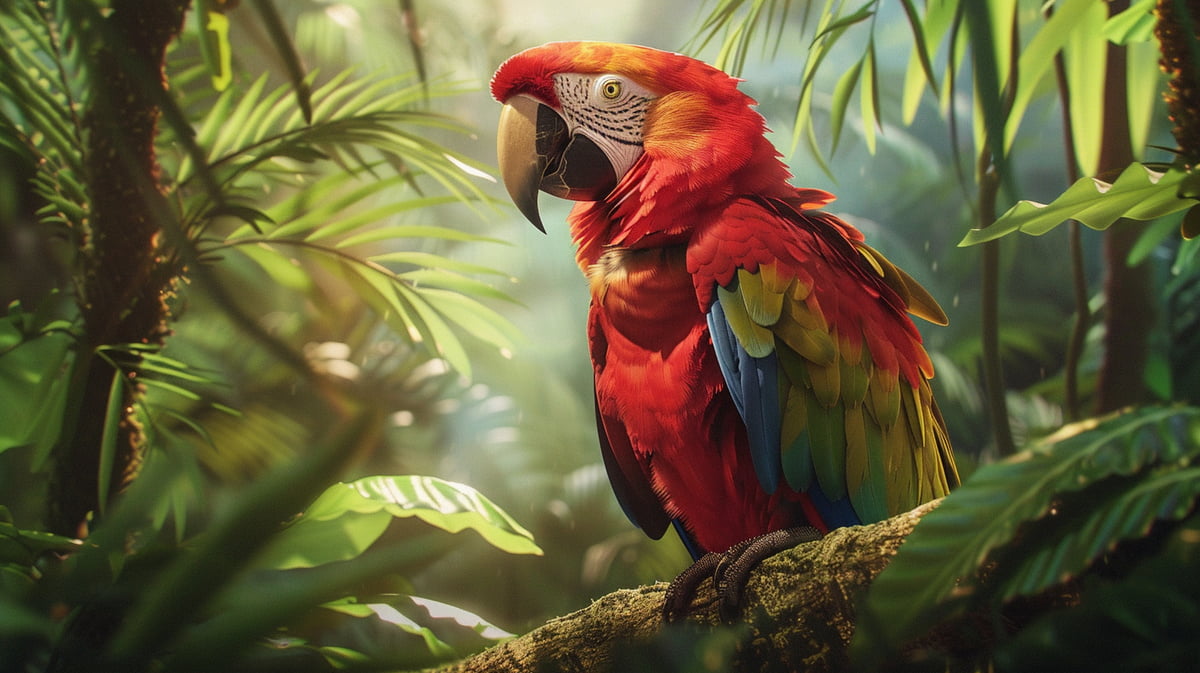As an ornithologist and birding authority, I’ve helped many people choose their first pet bird. It’s important to select the right bird for you and the bird itself. Inside this guide, you’ll find everything you need to know about pet birds, specifically the best bird species for beginners. You’ll learn about their personalities, care needs, and which birds may be the best fit for you.
Best Pet Birds for Beginners

Pet birds are excellent options for beginners who want a bird as a pet. I’ve helped many first-time bird owners and have found a few species that are particularly good options. Here are the 5 best pet birds that are excellent options for beginners:
- Budgies
- Cockatiels
- Finches
- Canaries
- Doves
When selecting your first bird as a pet, there are a few key considerations. Size is one – smaller birds are generally easier to care for and require less space. The noise level of a bird is also a major factor, especially if you live in an apartment, as some birds are louder than others. Temperament varies by species, and some birds are more independent, while others require constant interaction.
Budgies are playful and inquisitive birds, and they are relatively quiet. Some even learn to talk. Cockatiels are gentle, loving birds and are known for being quite friendly. Finches are active and social birds that do well in small groups or pairs. Canaries are known for their singing, and there are many types of canaries with different songs. Doves are very calm and peaceful birds, and they make a soothing cooing sound.
Another consideration is the lifespan of the bird. With proper care, a budgie’s lifespan is 7-15 years. Cockatiels can live to 15-20 years and in some cases, even 30 years. Doves typically live to be 8-15 years old, depending on the exact species. Canaries usually live to be about 9-10, although they can live to be over 15. Finches have a lifespan of 5-10 years, although some of the larger species can live to be over 20. With proper care, a green cheek conure can live for up to 30 years.
Housing Requirements for Pet Birds
Proper housing is important for your bird’s health and happiness. The cage size depends on the species. For example, for budgies, cockatiels, or birds of similar size, the minimum cage size is 18x18x24 inches. Larger birds need even more space. Flight cages (wider than they are tall) are ideal for finches and canaries.
As for cage accessories, birds need:
- Various perches of different diameters
- Food and water dishes
- Toys to keep them mentally stimulated
- A cage liner for easy cleaning
Keep the cage in a room where your bird can be part of the family. Don’t put the cage in a draft, direct sunlight, or in the kitchen near harmful cooking fumes. Birds also need to feel secure, so position the cage against the wall (as opposed to in the middle of a room).
Providing a safe out-of-cage environment is equally important. Here’s how:
- Get rid of any toxic plants.
- Cover windows to prevent birds from flying into them.
- Ensure ceiling fans and other hazards are blocked off.
- Provide additional perches and play spaces.
Feeding Your Pet Bird
A healthy diet is essential to keeping your bird healthy. Most pet birds can live a long and healthy life with a diet consisting mainly of a high-quality commercial bird food designed for that species, which should make up about 60-70% of their diet.
Additionally, offer fresh foods as a compliment to their commercial diet. Some of the best options include:
- Leafy greens (kale, spinach)
- Vegetables (carrots, bell peppers)
- Fruits sparingly (apples, berries)
- Moderate amounts of cooked lean meats or eggs for protein
Some foods are toxic to birds, including avocado, chocolate, caffeine, and alcohol. Avoid feeding your bird foods that are high in salt, sugar, or fat. Ensure your bird has access to clean, fresh water at all times, and change the water daily. The water dish should also be cleaned frequently.
Establish a consistent feeding schedule. Most birds do well with a morning and evening feeding. Again, keep in mind that specific species may have slightly different dietary needs, so it’s always best to consult with an avian veterinarian for advice specific to your type of bird.
Health and Hygiene for Pet Birds

Recognizing signs of a healthy bird is the first step to keeping your bird healthy. A healthy bird has bright, alert eyes, smooth feathers, and is active and responsive. It should have a good appetite and produce firm droppings.
Common health problems in pet birds include:
- respiratory infections
- feather plucking
- nutritional problems
Look for signs of illness, such as:
- lethargy
- fluffed-up feathers
- changes in droppings
Regular grooming is key. Trim nails as needed (on average, every few weeks). Some birds benefit from wing clipping, but this is a controversial topic. If you’re uncomfortable clipping your bird’s wings, seek out a professional.
Most birds love to bathe. Offer a shallow dish of water, or mist your bird with room temperature water. Some birds prefer to “shower” under gently running water.
Look for an avian vet to provide routine checkups and any emergency care you may need. While rare, psittacosis (parrot fever) can be transmitted from birds to humans. This risk is very low in the U.S., but it’s still important to practice good hygiene.
Socializing and Training Your Pet Bird
Socializing with your pet bird is essential to building a strong bond. Sit near the cage and talk softly to your bird. Then, gradually offer treats from your hand to help your bird learn to trust you.
To train your pet bird, start with basic commands, like “step up” onto your finger. Use positive reinforcement by offering treats and using verbal praise to encourage the bird to repeat the behavior. Never use negative reinforcement or punishment, as this can damage your relationship with the bird.
Many birds also enjoy learning tricks. You could teach your bird to do a small wave or to turn in a circle. Keep training sessions short and always end with a positive result.
Earning a bird’s trust requires time, so be patient and continue to work with your bird each day. Eventually, the bird will understand that you provide safety and fun.
Setting Up Your Bird’s Environment
Setting up the proper environment is vital to your bird’s happiness. Here are the basic supplies you’ll need:
- Right-sized cage
- Food and water bowls
- Different types of perches
- Toys to keep it mentally stimulated
- Cage liner or substrate
- Cage cover for the nighttime
Offer a variety of toys to keep your bird mentally engaged. Change out its toys often to prevent boredom. Use foraging toys to stimulate natural behaviors.
Most pet birds are fine at normal room temperatures of 65-80°F. Avoid exposing your bird to dramatic temperature changes. Allow your bird to sleep in 10-12 hours of darkness.
Evaluate the noise levels in your home. Though some birds are noisy in their own right, they may become stressed from loud background noise. A quiet environment helps your bird stay healthier and exhibit better behavior.
Cost Considerations for Pet Birds
The upfront cost to purchase a bird can range from very little to a significant investment, depending on the species and the quality of supplies you purchase. Here’s a general overview of the costs:
| Item | Cost Range |
|---|---|
| Bird | $10 – $1000+ |
| Cage | $50 – $300 |
| Food and Treats | $20 – $50 |
| Toys and Perches | $30 – $100 |
| Initial Vet Checkup | $50 – $200 |
You’ll also need to budget for ongoing costs, including food, toys, and regular vet checkups. Smaller birds, such as budgies or finches, are usually cheaper to care for than larger species.
Unexpected costs could include:
- A surprise trip to the vet
- Replacing the bird’s cage
- Damage from your bird
It’s a good idea to have an emergency fund set aside for your pet.
Don’t forget that owning a bird requires more than just money. You’ll also need to consider the time investment, as birds need daily care and attention. Keep this in mind as you select a pet bird for beginners.
A Few Last Words
Pet birds are wonderful companions that bring joy into our lives. I’ve experienced the many ways these birds enhance households. Just ensure you select a species that matches your lifestyle. Then, invest in a large cage, quality food, and annual vet check-ups.
It takes time and effort to earn your bird’s trust, but the bond you’ll build is gratifying. And it’s truly fulfilling to see your bird live a healthy, happy life. You’re about to take an exciting step into pet ownership.






